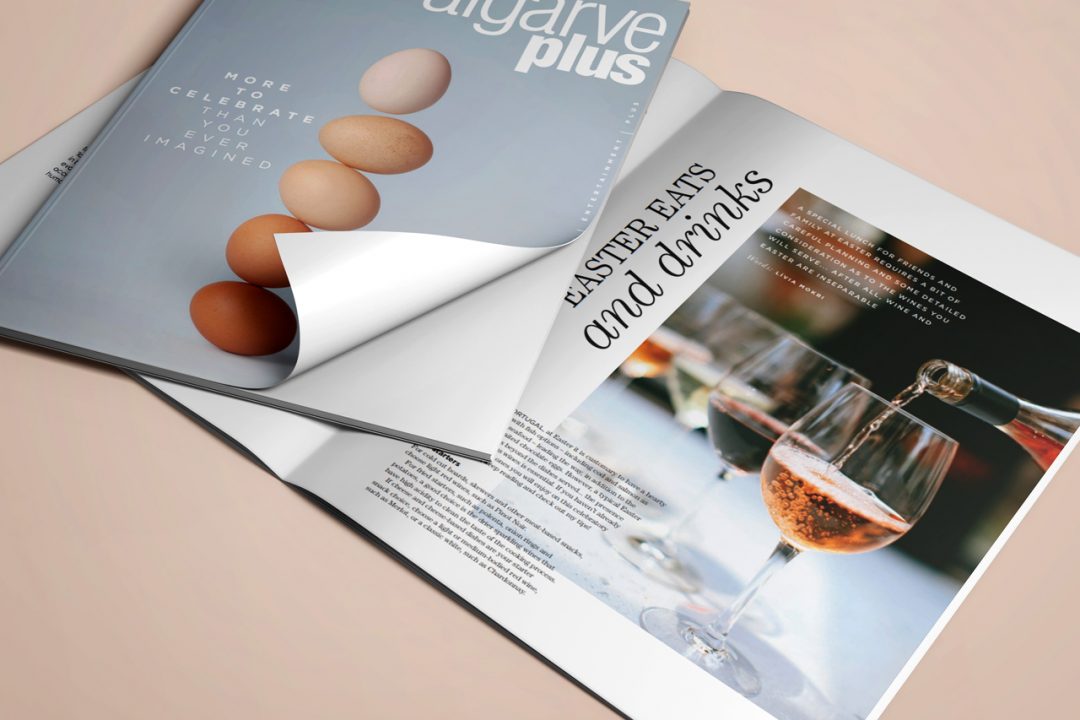Amphora Wine – Something to celebrate!
I am happy to share that my new article in the Algarve Plus Magazine has been already published!
If you want to know more about the Amphora wines, read my new writing here online below.
The magazine is readable online or downloaded for free here.
Enjoy!
Or read here the whole article:
Amphora Wine
WHEN YOU SEE THE EXPRESSION ‘VINHO DE TALHA’ ON ANY OF THE WINE LABELS OF PORTUGUESE WINES, YOU COULD BE SURE THAT WINE WAS PRODUCED IN A CLAY AMPHORA, WHEN THE FERMENTATION TAKES PLACE IN CLAY POTS.
ORIGIN
You can hardly avoid the ancient Roman presence in today’s Portugal’s Alentejo region. It’s not just the presence of Roman farmhouse ruins, but walking into any typical village, you’ll likely be dwarfed by rows of massive amphoras or wine pots. Called “talha”, these pots may not only be a mere decoration but they may actually contain up to 1000 liters of house-made wine called ‘Vinho de Talha” the famous Alentejo amphora wine.
This technique is far from new. The clay amphora is one of the oldest vessels for preserving and transporting liquids. In Portugal, historical data suggest that the talha has been used for making wine for more than 2,000 years in the country, and this tradition has never been lost.
The talha is a pot that varies in its porosity depending on its intended use and the type of clay it is made from. It is used for fermenting grape juice and storing several liquids, especially wine and olive oil.
The talha comes in a range of sizes and shapes, according to the potter’s working style and the local traditions where it is made. Since it is made of clay, it is porous and the inside has to be coated with an impermeable surface, with pine resin, for example.
No matter its age, the talha method has caught on with also a new wave of Portuguese winemakers. Each produces a style with small differences. One of them allows his talha wine to ferment naturally with wild yeasts because he likes the texture and structure that result from the continuous movement of the lees in the rounded talhas. Other winemakers covet the minerality that the clay imparts, and the freshness engendered by micro-oxygenation through the clay’s pores. And others paint the insides with a traditional mix of pine resin, beeswax and herbs because this helps prevent seepage and imparts complexity to the wine’s aroma.
The 1950s co-op of the industry killed this practice among producers, but the production of talha wines in Portugal has continuously grown again since 2011 when the DOC regulation was established.
These huge clay vessels are typically made and used locally. The reason for this is that the largest talhas measure about seven feet tall and can hold more than 525 gallons. They’re also fragile, and some of them also explode from pressure during fermentation.
Even so, the wine aged in clay amphora has been experiencing a renaissance across the globe and can now be seen also in places like the United States and Australia.
ALENTEJO – THE REGION OF TALHAS
In Portugal, the Alentejo region has long been the guardian of the tradition of talha wines, which process has been handed down from generation to generation throughout history, almost without change. The growing interest in talha winemaking in Alentejo has prompted some modern wineries to experiment with using these clay vessels. As a result, new techniques and equipment have been introduced to facilitate the process without tainting the essence of talha winemaking.
In today’s Alentejo, talha wine is intrinsically linked to the history, culture and social life in the Alentejo. They are commonly found in private and commercial wineries, where talhas dating back as far as the 18-19th century are still in use. Still, these kinds of wines are less than 0.002% of Alentejo wines.
Saint Martin’s Day, the “talha opening day”, is the high point in each year’s celebration of this millenary relationship between the Alentejo and talha wine.
HOW ARE THE TALHAS LIKE?
As I mentioned above, the pots are made of clay, a material that turns solid when fired.
Talhas are basically similar in shape but no two, of course, are the same. The biggest difference is found in the preferred curvature made by the potter. In Alentejo, each town tends to have a distinctive style of talha that is evocative of an object or a vegetable. There are talhas, for example, that are known for their turnip shape and are larger and with more bulges than those elsewhere. Other pots are noticeably smaller. And there are amphoras that are the most elegant due to their large curvature, while other ones are famous for being made with the best quality clay – more compact and less porous – due to their lower limestone content.
The talhas also may present different decorative elements as the craftsmen mark their handiwork with either a symbol or a brand.
Near the bottom of each talha there is a hole that is closed with a cork stopper called ’batoque’ that keeps the wine from dripping out.
The talha is porous and so it must be sealed to make it less permeable. Traditionally the pots go through a process during which the inside is coated with a type of pine resin.
HOW TALHA WINE IS MADE?
There is more than one way to make wine in talhas. Basically, the procedures for making talha wine have changed little in the last two thousand years. The grapes are crushed and then are put inside the clay amphorae, or talhas, where fermentation spontaneously takes place. During this period, the grape pulp and skins rise to the surface and form a solid mass. This is punched with a wooden plunger and is pushed back down into the must transmit more color, aroma and flavor to the wine. When fermentation is complete, the mass settles to the bottom of the talha where it serves as a filter. A spout is inserted on the side of the pot, near the base, and the filtered wine comes out clear.
Then a thin worker climbs into the pot to clean out the must.
In amphoras, the process of winemaking is the same for red or white wine. Moreover, blending of the two types of grapes is also common, giving them pink rosé wine, called ‘petroleiro’.
The wine is traditionally declared ready to drink on the 11th of November, Feira de São Martinho (Saint Martin’s Day).
The contents of a full 1400 liter vat will eventually produce about 1000 liters of wine. Generally, the wine is drunk very young, but longevity can be increased by floating olive oil on top, thus blocking air from oxidizing the wine.
OPENING THE TALHA
The “opening of the talha” takes place in a ceremony, traditionally on St. Martin’s Day, November 11th.
The talhas have a hole about 30 cm from the bottom, which is closed with a cork called ‘batoque’. A tap is then placed in the place of this cork and there are two options: either the wine is served directly from the amphora or emptied, drained in 1-2 days. In this case, the wine is transported to another clay pot, where it winters until it is consumed or bottled at the beginning of the following year (by March at the latest).
At the ceremony, the talha wine is consumed very quickly as there are many pubs and wineries so it is easy to run out. They offer seasonal dishes, quince, walnuts, chestnuts, and a wide range of local delicacies, especially pork, the famous Alentejo black pig.
What doesn’t run out will end up in smaller baskets or stainless steel tanks. Alternatively, it can be bottled after the addition of a small amount of sulfur dioxide. In some places in the Alentejo, a few raisins or rice grains are also often thrown into each bottle to trigger a second fermentation that gives the wine a slight sparkle when it is tasted the following spring or summer.
This wine is so popular that talha wine rarely lasts from one year to the next. It normally runs out between November and December.
The feeling of welcome is guaranteed by the Portuguese friends, by the satisfaction of meeting tourists who come to the country, especially for the celebration, and finally by the songs sung by those present, sung with enthusiasm.
HOW IS THE TALHA WINE?
Today we live in the renaissance of talha wines. These wines are matchless, overflowing with all the character and identity of the Alentejo. Whether it results from more classic procedures or modernized ones, talha wine is the epitome of the millenary wine culture of the Alentejo.
This is a light-bodied wine, presenting a blend of bright, fruity and nutty aromas. But each vintage is unique.
My personal suggestion is to decant in a glass for a while.
And do not remember that vinho de talha will be more difficult to find as summer approaches, as the wine is meant to be drunk very young.
There are still many amphora wineries in Alentejo, mostly between Beja and Évora who are welcome the tourists with open arms for a visit, especially at the festival in November when they open the talhas!
Worth a visit! Do not miss booking your tickets in time!






No Comments Found